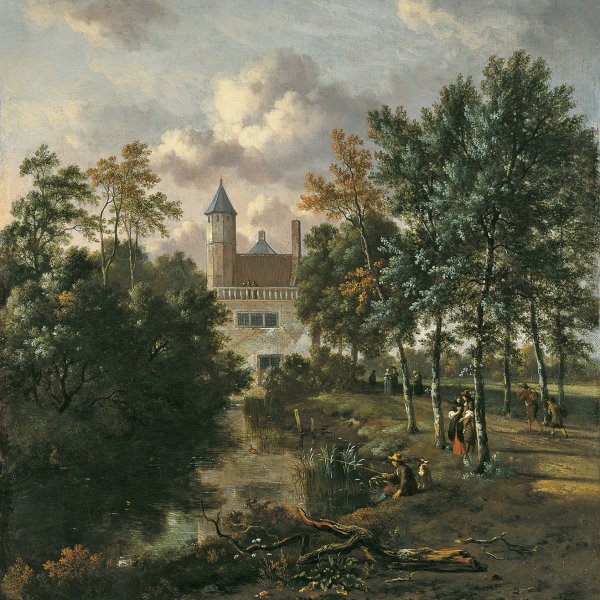Jan Wijnants
Haarlem, ca. 1635-Amsterdam, 1684
Jan Wijnants was born in Haarlem. His exact date of birth is unknown but must have been around 1635. His father was an art dealer of the same name. Wijnants is mentioned in various municipal documents until around 1660. His first works depict brick farm buildings and country cottages and are clearly influenced by the work of Dirck Wijntrack who habitually collaborated with him. Wijnants moved permanently to Amsterdam around 1660 and in 1661 married Catharina van der Veer. His paintings of this period are inspired by the outskirts of his native Haarlem and he followed the tradition of dune landscapes of the type painted by Pieter de Molijn and Jacob van Ruisdael.
Wijnants’ paintings are essentially variations on a single theme, that of the dune landscape, in which each work focuses on a different motif. He frequently selected dry or withered trees as the main element in the foreground and peopled his compositions with shepherds, hunters and travellers at rest. These figures were generally painted by other artists such as Johannes Lingelbach and Adriaen van de Velde, the latter being Wijnants’ pupil, according to Houbraken. The Herengracht, Amsterdam (Cleveland Museum of Art) is a topographical view of this famous canal and is exceptional within Wijnants’ oeuvre due to its subject matter.
Like many other 17th-century Dutch painters, Wijnants had a second profession and he owned an inn on the Looiersgracht in Amsterdam. Despite this, he frequently experienced financial problems and court cases involving his creditors are constantly referred to in city documents. Wijnants’ work was of great importance to 18th-century English landscape painting, particularly the work of Thomas Gainsborough.
Wijnants’ paintings are essentially variations on a single theme, that of the dune landscape, in which each work focuses on a different motif. He frequently selected dry or withered trees as the main element in the foreground and peopled his compositions with shepherds, hunters and travellers at rest. These figures were generally painted by other artists such as Johannes Lingelbach and Adriaen van de Velde, the latter being Wijnants’ pupil, according to Houbraken. The Herengracht, Amsterdam (Cleveland Museum of Art) is a topographical view of this famous canal and is exceptional within Wijnants’ oeuvre due to its subject matter.
Like many other 17th-century Dutch painters, Wijnants had a second profession and he owned an inn on the Looiersgracht in Amsterdam. Despite this, he frequently experienced financial problems and court cases involving his creditors are constantly referred to in city documents. Wijnants’ work was of great importance to 18th-century English landscape painting, particularly the work of Thomas Gainsborough.




